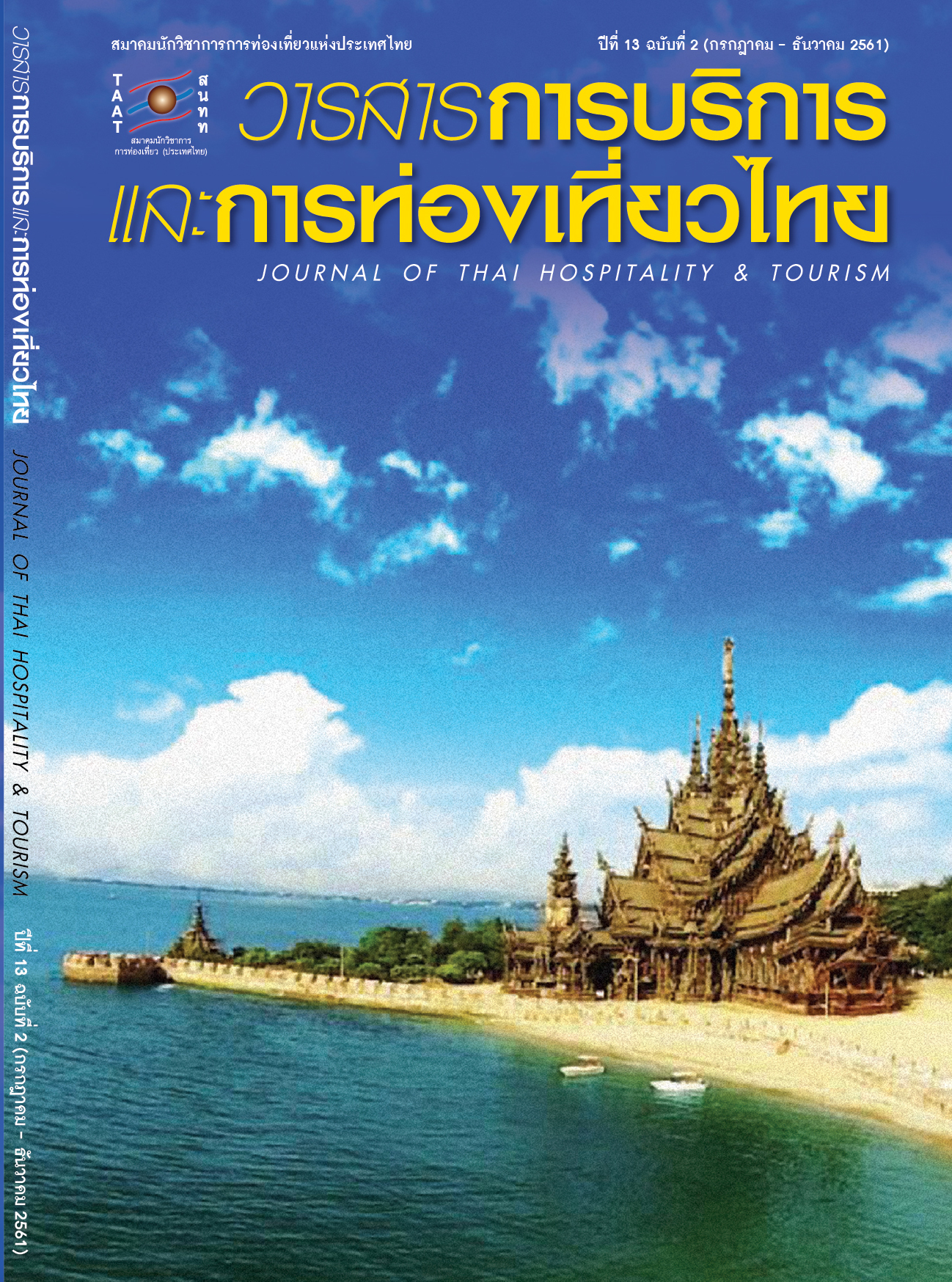Tourists’ Needs Based on the Marketing Mixed Factors at the Services of Three – Stars Hotels in Nakhon Si Thammarat Province, Thailand
Main Article Content
Abstract
The objective of this study is to study the tourists’ needs based on the Marketing Mixed Factors (7Ps) at the Services of Three–Stars Hotels in Nakhon Si Thammarat Province, Thailand, and to compare the tourists’ needs based on the Marketing Mixed Factors (7Ps) at the Services of Three–Stars Hotels in Nakhon Si Thammarat Province, Thailand by tourists’ personal factors. The sample size is 385 Thai national tourists at Three-Stars Hotels in Nakhon Si Thammarat Province, Thailand, with the 95% confidence and the error of 1/10 of standard deviation. The data collecting instrument are close-ended and open-ended questionnaires with the use of frequency, percentage, mean, and standard deviation, and proved the hypotheses by a t-test, one-way ANOVA that followed by Scheffe Method. The findings reveal that 1) most of the tourists in the Tri-Stars Hotel in Nakhon Si Thammarat Province, Thailand, female, by the age between 40–59 years, single, Bachelor degree, occupation is most a company employee, and the income of 15,001 baht to 20,000 baht per month 2) the marketing mixed factors (7s) that the tourists need most are all 7 factors i.e. Products (Rooms and Services), Personnel, Process, Price (room rate and other services), Place (Distribution Channel), Promotion, and Physical Evidence, and 3) the hypothesis testing, showed that the tourists who have different personal factor needed those different marketing mixed factors (7Ps) at the 0.001 significant level (except on the gender factor).
Article Details
References
[2] Chuanchom, Jirat et al. (2013). The Relationship between Traveler’s Decision Making in the Choosing A Resort and Resort Marketing Mixed Management in the Khao Ko District, Phetchabun Province. Journal of Thai Hospitality and Tourism, 8(2), 31.
[3] Kaeomorakot, Karaket. (2011). The Effect of Marketing Mixed Factors on Thai Tourists Hotel Selection in Krabi Province. Thesis, Degree of Master (Business Administration), Suratthani Rajabhat University, Suratthani.
[4] Kitpridaborisuth, Buntham. (2008). Social Sciences Research Methodology (10th ed.). Bangkok: Chamchuri Product.
[5] Nakhon Si Thammarat Province, Administrative Office. (2014). Hotels in Nakhon Si Thammarat Province 2014. Retrieved November 12, 2014, from https://www.pokkrongnakhon.com/datacenter/tabean.php
[6] Phongwiritthon, Ratthanant et al. (2012). Study of Guidelines on Potential Development of Pangda Great Agricultural Station for Sustainable Agro-tourism Development (Royal Project). Chiang Mai: Rajamangala University of Technology Lanna.
[7] Silanoi, La-iard. & Sutthirak, Supavadee. (2015). The Influence of Marketing Mixed Factors on Tourists’ Decision Making for Visiting the Agro-tourism Attraction: A Case Study of Suan Sala Athit Agro-tourism Attraction, at Ban Na San District, Surat Thani Province, Thailand. Journal of Thai Hospitality and Tourism, 10(2), 47-59.
[8] Sripairoj, Quandee and Silanoi, La-iard. (2015). Tourists’ Satisfaction on Visiting Retro Market: A Case Study of Talat KoKloi (KoKloi Retro Market) at Muang District, Rayong Province, Thailand. Journal of Cultural Approach, 16(30), 3-14.
[9] Tourism Department, Ministry of Tourism and Sports, and National Statistical Office of Thailand. (2015). Situations of Domestic Travellers: Nakhon Si Thammarat Province 2009-2015 (Last Adjustment: 2016). Retrieved February 11, 2017, from https://service.nso.go.th/nso/web/statseries/statseries23.html.
[10] Weiers, R. M. (2005). Introduction to Business Statistics. International Student Edition, (5th ed.). Pennsylvania. Duxbury, Thomson-Brooks/cole.
[11] Yukhong, Chonthini. (2012). Thai Tourists Satisfaction in Using Hotel Services at Amphoe Mueang, Changwat Ranong. Bangkok: Saun Sunantha Rajabhat University.


